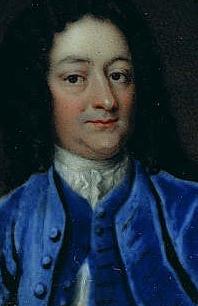Henry Hawley | |
|---|---|
 | |
| Governor of Portsmouth | |
| In office 8 July 1752 – 24 March 1759 | |
| Governor of Inverness | |
| In office 1748–1752 | |
| Commander-in-chief, Scotland | |
| In office December 1745 – July 1746 | |
| Personal details | |
| Born | 12 January 1685 Westminster, London |
| Died | 24 March 1759 (aged 74) West Green House, Hampshire |
| Resting place | St Mary's Church, Hartley Wintney |
| Relations |
|
| Military service | |
| Allegiance | |
| Branch | |
| Years of service | 1702–1748 |
| Rank | Lieutenant general |
| Unit | 4th Dragoons |
| Battles/wars | |
Henry Hawley (12 January 1685 – 24 March 1759) was a British army officer who served in the wars of the first half of the 18th century. He fought in a number of significant battles, including the Capture of Vigo in 1719, Dettingen, Fontenoy and Culloden.
During the Jacobite rising of 1745, he was recalled to Britain and appointed commander in Scotland in December, replacing Sir John Cope. In January 1746, he was defeated at the Battle of Falkirk Muir, although it did not damage his career in the same way. The Duke of Cumberland took over and Hawley led the cavalry at Culloden in April, a victory that ended the Rising.
Although a courageous and capable commander of cavalry, Hawley was also a strict disciplinarian, referred to by contemporaries as 'Hangman Hawley' or 'Lord Chief Justice.'[1] While this referred to his disciplinary methods, there is evidence he bears some responsibility for the killing of Jacobite wounded after Culloden. He returned to Flanders in July 1746, and when the War of the Austrian Succession ended in 1748, he was appointed Governor of Inverness; in 1752, he became Governor of Portsmouth, near his home in Hartley Wintney, where he died in March 1759.
